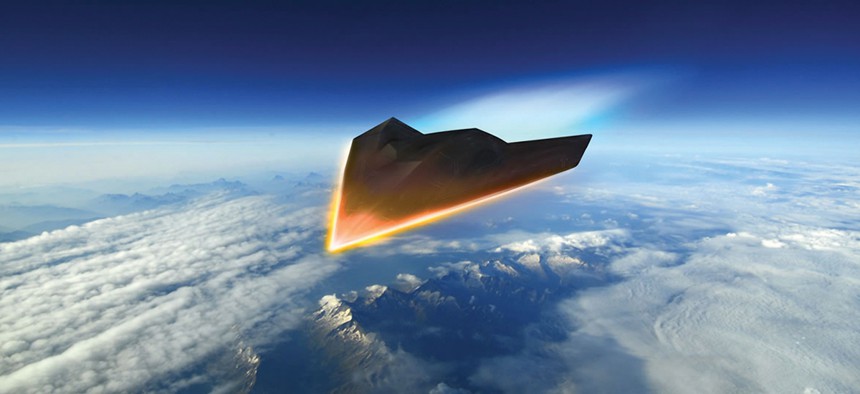sponsor content What's this?

To Shield and Protect: Meeting the US call for a multi-layered approach to missile defense
Working with advanced radars, satellites and interceptors, Raytheon is answering the U.S. DoD call for a multi-layered approach to missile defense.
Presented by
Raytheon

Operating at extreme speeds and high altitudes, hypersonic weapons are hard to stop. Raytheon is a leader in the development of counter-hypersonics and hypersonics for the U.S. Department of Defense. Hypersonics are a part of a layered missile defense approach.
The U.S. Department of Defense has seen the future, and it is rife with increasing threats.
In its 2019 Missile Defense Review, the DoD laid out U.S. strategy for layered missile defense, a time-tested concept that is evolving across all domains from sea to space. With the release of the MDR, Acting U.S. Secretary of Defense Patrick Shanahan warned the nation's competitors that, "we see what you’re doing, and we’re taking action.”
Raytheon is investing in a wide range of technologies for a multi-layered approach to missile defense. It is fielding or developing time-tested systems like Patriot and new concepts like hypersonic technologies. The company is well-positioned to advance this wide range of tech. Over the last 40 years, Raytheon has been the largest provider of missile warning and missile defense space sensors in the world.
“We have a strong bench of technology already developed,” said Wallis Laughrey, vice president of Space Systems, including "everything from focal planes, optics and electronics to the mission folks who understand the threats.”
Staying ahead of the other guy
Modern missile defense requires technologically advanced radars, satellites and interceptors, working in layers to meet the adversary at short and long range, on land, at sea, and in space.
Space is the newest frontier for defense. A study from the Washington, D.C.-based think tank Center for Strategic and International Studies concludes that space and integration are key attributes for missile defense.
The need for space-based early warning and tracking could be met by technologies such as the Next Generation Overhead Persistent Infrared, or Next-Gen OPIR, Block 0 resilient missile warning satellite. The U.S. Air Force has budgeted $1.7 billion to develop a constellation of Next-Gen OPIR satellites, according to Space News. Raytheon is one of two contractors chosen to develop the payload for these satellites.
Advanced sensors on satellites and other platforms make practical the U.S. Navy's ability to “launch on remote” or “engage on remote," allowing a naval commander to launch interceptors even before the ship's radar has pinned down the target. Distributed sensors, issuing a stream of data, allow for a "sensor-to-shooter" scenario, giving defenders the ability to act quickly on information from distant or nearby sensors.
“The shooter doesn’t need any other data other than what it gets from the radar to launch and engage and destroy that target," said Bryan Rosselli, vice president of Mission Systems and Sensors.
Filling the quiver
With adversaries racing to develop hypersonics, it's no wonder that faster-than-Mach 5 technologies are a dominant theme in the global conversation surrounding missile defense. That's why Raytheon is working on several fronts to meet the technical challenges of operating at such high speeds.
Still, effective defense requires a full quiver of options; non-kinetic effects, cyber defenses and speed-of-light tech such as directed energy. And ultimately, advanced command and control, or C2, to manage the full suite of defenses.
“Future missile defense is much more than hypersonics,” said Mitch Stevison, Raytheon Strategic and Naval Systems vice president.
Stevison advocates for a new way to think about C2 that is a “leap ahead,” where C2 is decentralized, as opposed to having specific C2 physical nodes that could become targets.
“There must be interfaces to the system, where the combatant commanders have the ability to operate the system, but there is no centralized C2 node," he said. "Everything is a C2 node, whether it is an effector, a radar on the ground or a satellite with a space-based sensor on it. They all have the ability to operate as part of a network or to operate autonomously."